Flat-tailed Horned Lizard (Phrynosoma mcallii)
Created: August 20th, 2010 - 09:25 PM
Last Modified: March 3rd, 2011 - 11:06 PM Entered by: Jonathan Hakim
Record 52843
Last Modified: March 3rd, 2011 - 11:06 PM Entered by: Jonathan Hakim
Record 52843
|
Country: United States |
State: California |
County: Imperial County |
Time: 2010-08-19 07:47:00 |
|
|
Qty: 1 |
Age: Adult |
Sex: Female |
Method: Road cruising |
Habitat: Desert |
|
Body Temperature: ----- |
Air Temperature: ----- |
Ground Temperature: ----- |
Humidity: ----- |
|
|
Sky Conditions: Partly Cloudy |
Moon Phase: Waxing Gibbous |
Elevation: 127.00ft |
Barometric Pressure: ----- |
|
Notes
Adult female roadcruised. Early morning hour and spot in shade combined to make her very cool and sleepy, and she did not move despite very close approach. Jackson Shedd (see comments) has brought up the possibility that this may be a hybrid with P. platyrhinos.
Vouchers
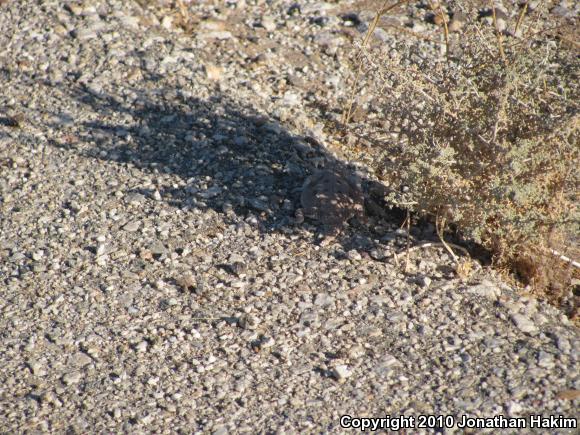
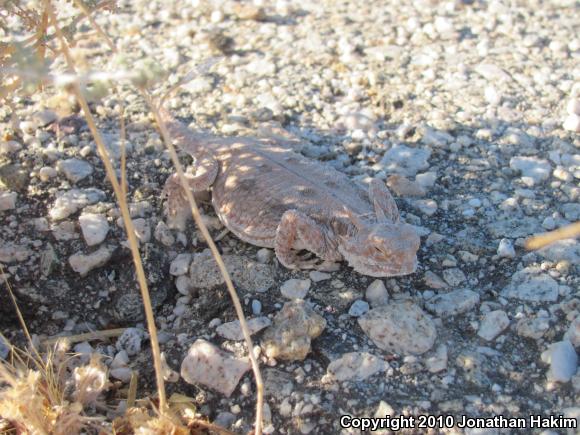
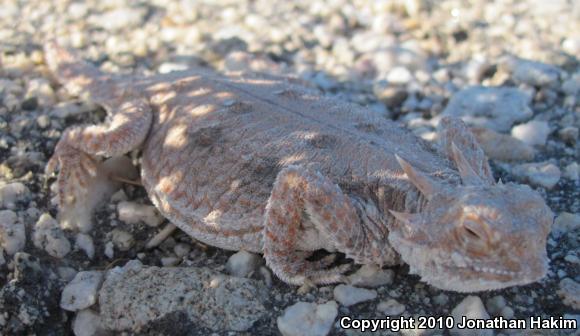
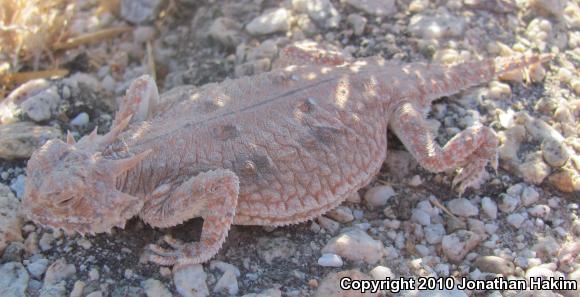
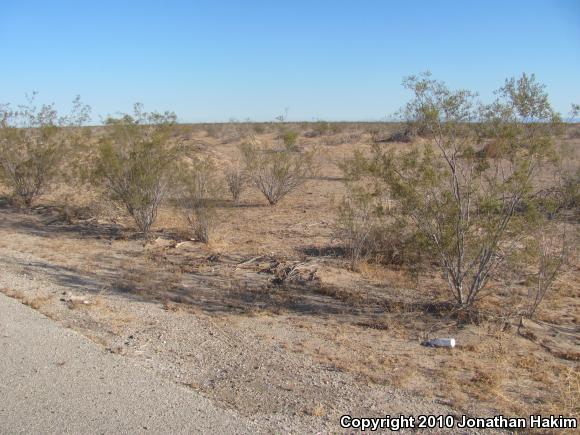






Comments
Very interesting - I've added that to the notes. Like you say, I don't have much to compare it to, though I did think voucher #4 showed off the legs a little better. It's obviously part-mccalli, but the idea of it also having platyrhinos influence is very interesting.
p.s. - this a long ways from Ocotillo.
Will's lizard was definitely a hybrid. There have been others found in the Ocotillo area as well. Your Phrynosoma here has the dorsal stripe and elongated occipital horns of P. mcallii. However, the tail looks a bit too short and rounded and the temporal horns don't look as developed; these traits look more characteristic of P. platyrhinos. I know this was your first flat-tail, so you didn't have any experience to compare it to, but to me it just looks odd. It may be that it is female w/ distended torso and is crouching, but the limbs don't appear quite as long and slender as in pure mcallii either.
No, no one's ever said that! I know that Will Flaxington has seen a Phrynosoma that he thought could be the same hybrid, but that was several years before I saw this one and no one has ever posed that idea to me. What are the indicators that make you think that?
J-I'm fairly confident that this is a hybrid (P. platyrhinos x mcallii). Had we discussed this already? I can't recall.